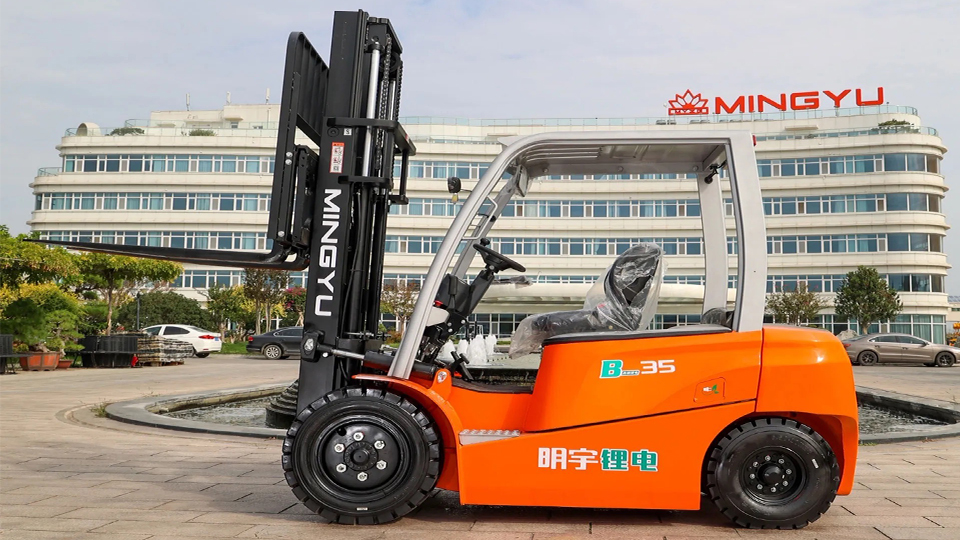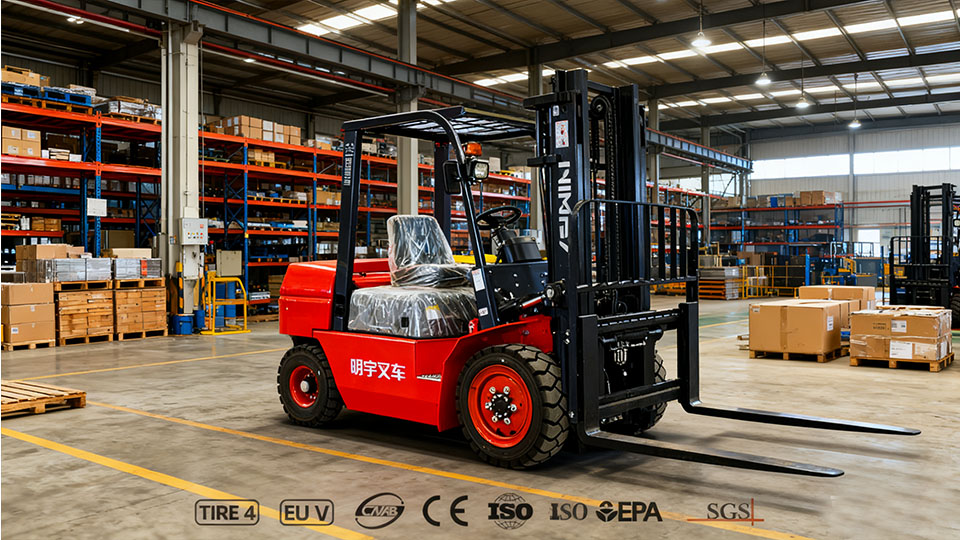
I. Introduction: The Critical Role of Charging in Fleet Longevity
The electric forklift remains the backbone of modern material handling, and its power source—the industrial battery—is a mission-critical asset. The life-cycle cost, fleet uptime, and overall operational efficiency of an electric lift truck fleet are inextricably linked to battery management. Charging is not merely the act of replenishing energy; it is a complex chemical and electro-thermal process that, when executed improperly, is the single greatest determinant of premature battery degradation and diminished return on investment.
This technical article dissects the optimal timing for forklift battery recharge, differentiating between the two predominant chemistries in the industry: Flooded Lead-Acid (FLA) and Lithium-Ion (Li-ion) Phosphate (LFP). The analysis centers on the principle of Depth of Discharge (DoD), the associated charge cycle limitations, and the operational best practices that maximize battery lifespan and minimize fleet downtime.
II. The Technical Imperative: Depth of Discharge (DoD)
The single most important parameter in determining when to recharge an industrial battery is the Depth of Discharge (DoD). DoD is the inverse of the State of Charge (SoC) and represents the percentage of the battery's total capacity that has been used.

A. The 80% DoD Rule
For nearly all industrial batteries, the foundational best practice is to adhere to the 80% DoD rule, which mandates that the battery be removed from service and placed on charge when its remaining capacity falls to 20% to 30% SoC (i.e., when 70% to 80% of its energy has been discharged).
Operating beyond the 80% DoD threshold, often referred to as deep discharging or entering the "red zone," severely stresses the battery's internal components, leading to an exponential reduction in cycle life for both lead-acid and lithium-ion chemistries.
III. Flooded Lead-Acid Batteries: The Conventional Charging Regime
Flooded Lead-Acid (FLA) batteries rely on a reversible chemical reaction between lead plates and sulfuric acid electrolyte. Their charging protocol is heavily constrained by electrochemical principles that govern their health and longevity.
A. Optimal Recharge Timing for FLA
FLA batteries should be recharged when their SoC reaches the 20% to 30% range. The decision to charge is further dictated by a crucial consideration: each plug-in event consumes one of the battery's finite life cycles, regardless of the initial SoC.
1. The 8-Hour Rule and Its Impact on Cycle Life
The standard for FLA charging is the Conventional Charging Regime, commonly summarized as the 8-hour use, 8-hour charge, and 8-hour cool-down cycle.
Charging Duration: A full recharge typically requires 8 to 10 hours at a C/5 rate (a current equivalent to 1/5th of the battery's Amp-Hour capacity). This multi-stage process—comprising bulk, absorption, and float phases—is necessary to reverse the sulfation process and ensure full saturation.
Cool-Down Requirement: A mandatory 8-hour cool-down period is essential. The charging process in FLA batteries is inefficient, generating substantial heat and causing the electrolyte to gas (hydrogen and oxygen). Operating a battery while hot significantly accelerates the degradation of the active plate material.
Best Practice: The optimal frequency for FLA is once per 24-hour period following a full discharge to 20% SoC. Intermittent or "opportunity" charging of FLA batteries—plugging in for short durations during breaks—is strictly discouraged because it unnecessarily consumes a full charge cycle without achieving the critical re-balancing necessary for sulfation reversal, thereby rapidly diminishing overall service life.
B. The Necessity of Equalization
FLA batteries require a periodic equalization charge—a purposeful, controlled overcharge beyond the normal cycle—typically performed once per week or every five to ten normal charge cycles.
Technical Purpose: This extended charge at a reduced current is critical to address electrolyte stratification (where the heavier sulfuric acid settles at the bottom of the cell) and to dissolve stubborn, non-conductive sulfate crystals that accumulate on the plates.
Timing: Equalization charges are typically an additional 2 to 4 hours atop the standard charge and are often scheduled over a weekend or during a non-operational period due to the extended thermal and gassing period required.
IV. Lithium-Ion Batteries: The Opportunity Charging Paradigm
Lithium-Ion (Li-ion) LFP batteries represent a paradigm shift in charging strategy due to their chemistry. They operate via intercalation—the reversible insertion of lithium ions into the electrodes—a process that is far more thermally stable and electrically efficient than the chemical reaction in lead-acid cells.
A. Optimal Recharge Timing for Li-ion
While the 20% to 30% SoC threshold remains a safety and longevity guideline for deep discharge, Li-ion's chemistry permits a far more flexible and advantageous charging regimen: Opportunity Charging.

1. The "Snack" Charging Advantage
Li-ion batteries do not suffer the "memory effect" or the cycle-life penalty associated with partial charges that plague FLA.
Flexibility: The optimal time to charge a Li-ion battery is whenever the forklift is idle, regardless of the current SoC. Short 15- to 30-minute 'snack' charges during operator breaks, shift changes, or lunch periods are highly beneficial.
Technical Benefit: Keeping the battery within a mid-range SoC (40% to 80%) is often beneficial, as it reduces overall cell stress and extends the total service life (often 3,000 to 5,000 cycles).
Charging Duration: Li-ion batteries can accept a charge at a much higher current rate (often a 1C rate), allowing them to reach 80% SoC in as little as 1 to 2 hours, and a full 100% charge in under 4 hours.
No Cool-Down: Crucially, Li-ion batteries require no cooling period, enabling immediate re-deployment and facilitating 24/7 multi-shift operations without battery swapping.
B. The Role of the Battery Management System (BMS)
Li-ion charging is governed by a sophisticated Battery Management System (BMS), an internal electronic control unit.
Safety and Control: The BMS monitors individual cell voltage, temperature, and current flow, actively managing the charge profile (Constant Current / Constant Voltage - CC/CV) to ensure safe and balanced charging.
Automation: The BMS is the technical authority that dictates when a charge should terminate, automatically preventing overcharging and cell imbalance, which removes human error from the most critical part of the process.
V. Operational Strategy: Matching Chemistry to Workflow
The question of "when to recharge" ultimately becomes a strategic decision to align the chosen battery chemistry with the material handling operation.
Operational Profile FLA Strategy (Conventional) Li-ion Strategy (Opportunity)
Single-Shift (8 Hours) Recharge after the shift when SoC is 20%-30%. The 8-hour charge and 8-hour cool-down are managed overnight. Recharge frequency: 1 per 24 hours. Recharge at the end of the shift to 100% or use opportunity charging throughout the day to keep SoC high.
Multi-Shift (16-24 Hours) Requires battery swapping. Each forklift needs 2 to 3 batteries in a fleet rotation to maintain the 8-hour charge/cool-down rule. Charge immediately upon removal. No battery swapping required. Utilize short, frequent opportunity charges during breaks/lunches to prevent SoC from dropping below 40% and ensure continuous operation.
Mandatory Limit (OSHA Guideline) 20% SoC (or 80% DoD) to prevent permanent damage. 20% SoC (or 80% DoD) to preserve cycle life.
VI. Technical Risks of Sub-Optimal Charging
Deviating from the optimal charging regimen results in predictable, accelerated battery failure modes.
Sub-Optimal Practice Affected Chemistry Technical Consequence
Deep Discharging (Below 20% SoC) FLA & Li-ion FLA: Irreversible, hard sulfation; plate degradation; overheating. Li-ion: Accelerated electrode material breakdown; safety circuit activation; permanent capacity loss.
Interrupted/Partial Charging FLA Incomplete reversal of sulfation; premature consumption of a full life cycle count; electrolyte stratification.
Overcharging FLA & Li-ion FLA: Excessive gassing; accelerated grid corrosion; plate warping; high temperatures. Li-ion: Thermal runaway risk (though mitigated by BMS); accelerated capacity fade.
Charging a Hot Battery FLA Destroys active material on the plates, leading to severe capacity fade and a short service life.
VII. Conclusion
The timing of a forklift battery recharge is an engineering decision based on the battery's specific electrochemistry.
For Flooded Lead-Acid batteries, the recharge must be regimented and deliberate: only charge when the battery is near 20% SoC, commit to a full 8-hour cycle, and allow a full 8-hour cool-down. Frequent partial charging is chemically detrimental.
For Lithium-Ion batteries, the recharge is flexible and opportunistic: charge whenever the forklift is idle to maintain a high average SoC. This enables 24/7 throughput, eliminates the need for battery rooms, and leverages the battery's inherent high efficiency to dramatically increase operational uptime and battery life cycles.
Fleet managers must implement strict protocols and utilize modern battery monitoring systems (BMS/telematics) to ensure adherence to the 20% SoC/optimal DoD threshold for each chemistry, thereby preserving the service life of these critical power assets.
Name: selena
Mobile:+86-13176910558
Tel:+86-0535-2090977
Whatsapp:8613181602336
Email:vip@mingyuforklift.com
Add:Xiaqiu Town, Laizhou, Yantai City, Shandong Province, China